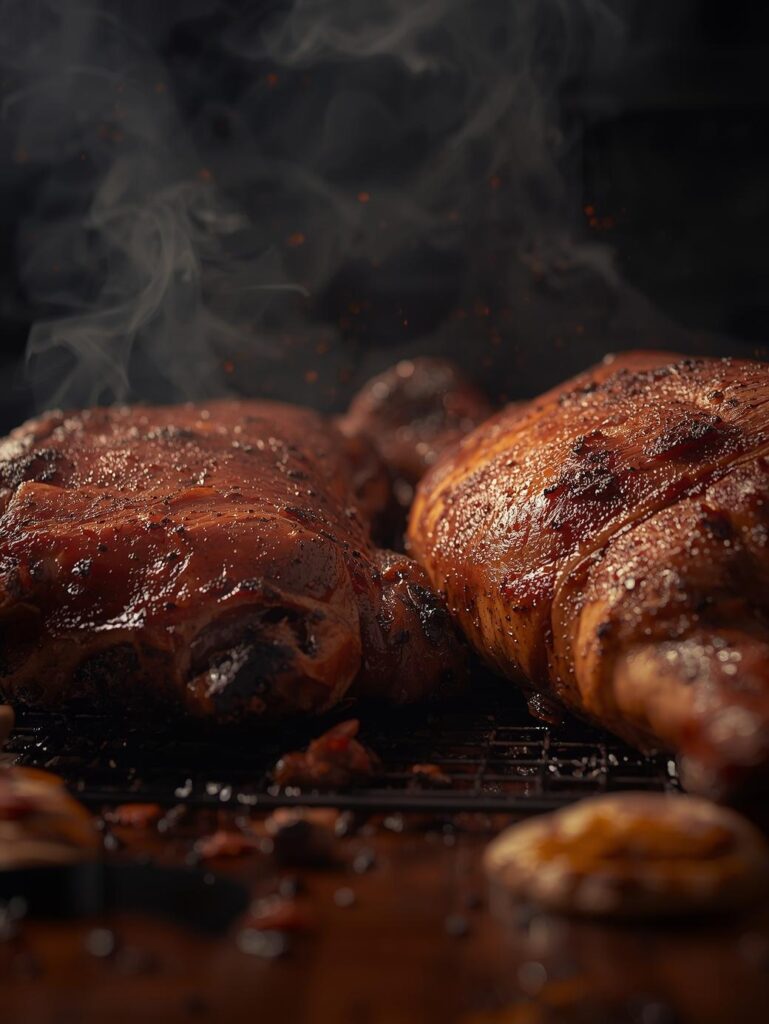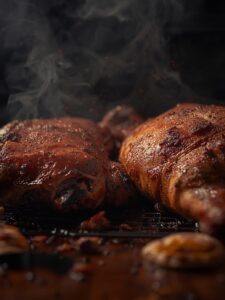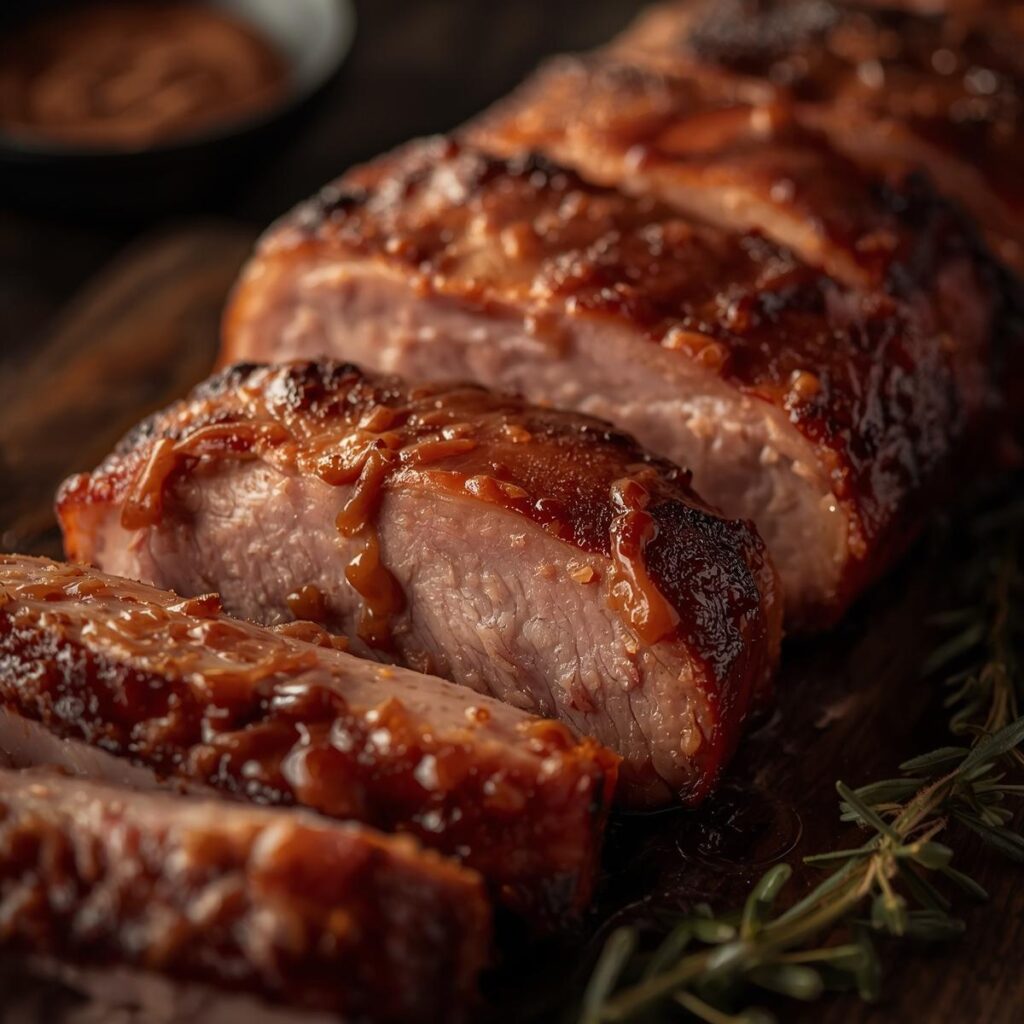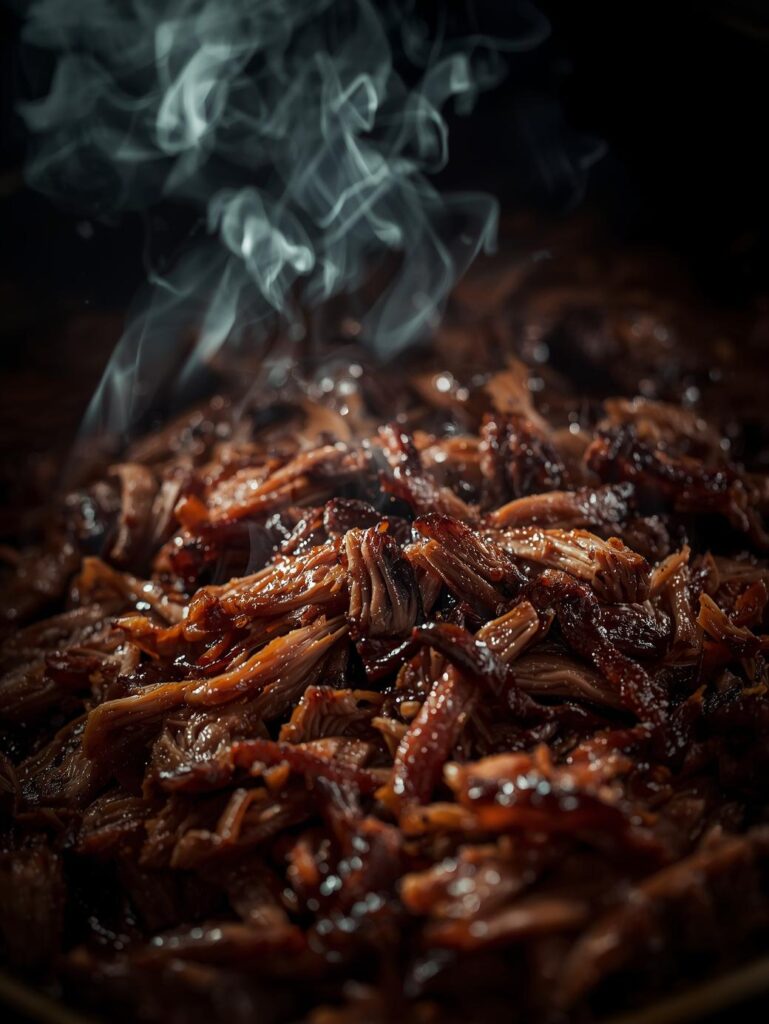Pitmaster’s Note: This guide settles the great BBQ debate: pork belly burnt ends versus pork shoulder. One delivers crispy, caramelized bites of pure pork candy; the other offers tender, smoky shreds of BBQ perfection. This isn’t about declaring a winner—it’s about understanding when to deploy each weapon in your BBQ arsenal. Whether you’re feeding a crowd or chasing flavor nirvana, knowing the strengths of each cut transforms you from casual griller to strategic pitmaster.
Pork Belly Burnt Ends vs Pork Shoulder: The Ultimate BBQ Showdown
“Choosing between pork belly burnt ends and pork shoulder is like choosing between filet mignon and ribeye—both are spectacular, but they serve different masters. Pork belly is the showstopper, the conversation piece that makes guests’ eyes widen. Pork shoulder is the workhorse, the reliable crowd-pleaser that never fails to satisfy. The wise pitmaster doesn’t choose sides; they master both, deploying each according to the occasion, the crowd, and the craving.”
Pork Belly Burnt Ends vs Pork Shoulder: The Ultimate BBQ Showdown
Download Your Free Pork Showdown Comparison Chart
Welcome to the main event of pork BBQ, where two heavyweight champions enter the smoker but only one can claim victory for your specific needs. This guide will break down every aspect of the pork belly burnt ends versus pork shoulder debate, giving you the knowledge to choose wisely based on time, budget, occasion, and desired results. Prepare to become the authority on when to go for glory with burnt ends and when to play it safe with shoulder.
🎯 THE CONTENDERS: MEET THE CHAMPIONS
Understanding each cut’s fundamental nature is key to choosing your champion.
⚙️ Anatomical Advantages
The Science Behind Each Cut
- Pork Belly Structure: Comes from the animal’s underside with incredible fat layering between muscle. This fat renders into creamy richness while the meat becomes tender. The perfect balance for burnt ends magic.
- Pork Shoulder Anatomy: From the front leg/shoulder area, this is a working muscle with significant collagen and intramuscular fat that breaks down into pull-apart tenderness during long cooking.
- Fat Content Showdown: Pork belly is 50-60% fat, while pork shoulder is 20-30% fat. This fundamental difference dictates cooking method and final texture.
- Muscle Fiber Variation: Shoulder’s multiple muscle groups create complex texture, while belly’s uniform layers create consistent bite.
📊 The Ultimate Showdown Matrix
🎯 Head-to-Head Comparison
| Category | 🥓 Pork Belly Burnt Ends | 🍖 Pork Shoulder | 🏆 Winner |
|---|---|---|---|
| Flavor Intensity | Rich, porky, caramelized | Smoky, beefy, traditional | 🥓 Burnt Ends |
| Texture Experience | Crispy exterior, creamy interior | Tender, shreddable, moist | 🍖 Shoulder (versatility) |
| Cook Time | 4-6 hours total | 8-14 hours | 🥓 Burnt Ends |
| Cost Per Serving | $$$ ($4-6/serving) | $ ($1-2/serving) | 🍖 Shoulder |
| Skill Level | Intermediate (timing critical) | Beginner-friendly (forgiving) | 🍖 Shoulder |
| Crowd Feeding | Appetizer/small groups | Feeds armies | 🍖 Shoulder |
| Wow Factor | Extreme (visual & taste) | Classic (comforting) | 🥓 Burnt Ends |
| Leftover Versatility | Limited (best fresh) | Excellent (multiple uses) | 🍖 Shoulder |
🔥 COOKING TECHNIQUES COMPARISON
Each cut demands specific approaches to achieve BBQ perfection.
🎪 Pork Belly Burnt Ends Method
The Three-Stage Process
- Stage 1: Smoke Naked (2-3 hours): Cube belly into 1.5-inch pieces, apply savory-sweet rub, smoke at 250°F until bark forms and fat begins rendering.
- Stage 2: Braise Tender (1-2 hours): Transfer to aluminum pan with butter, honey, and stock. Cover and continue cooking until tender but not falling apart.
- Stage 3: Glaze & Set (30-45 minutes): Uncover, add BBQ sauce, return to smoker until glaze sets and edges caramelize.
- Critical Timing: The window between tender and mushy is small. Probe for resistance—should give like stiff butter.
🛠️ Pork Shoulder Technique
Low, Slow, and Simple
- The Set-It Strategy: Apply simple SPG (salt, pepper, garlic) rub. Smoke at 225-250°F for the long haul. No wrapping needed until you hit the stall.
- Stall Management: When internal temperature stalls at 160-170°F (usually 5-7 hours in), wrap in butcher paper or foil with a little liquid to power through.
- Probe for Perfection: Cook to 200-205°F internal. The probe should slide in with almost no resistance, like pushing into peanut butter.
- The Rest is Everything: Rest for 1-2 hours minimum in a cooler. This is non-negotiable for pulled pork perfection.
🍖 FLAVOR PROFILES AND SAUCE PAIRINGS
Each cut shines with different flavor approaches and sauce companions.
🥓 Burnt Ends Flavor Strategy
Sweet, Spicy, Glazed
- Rub Philosophy: Sweet base (brown sugar, paprika) with heat backbone (chili powder, cayenne). The sugar caramelizes beautifully.
- Glaze Approach: Thick, sweet sauces that set into a glaze. Honey, maple syrup, or reduced fruit-based sauces work perfectly.
- Finishing Touches: Reduced braising liquid makes incredible sauce. Drizzle over top or serve alongside for dipping.
- Spice Level: Can handle significant heat since the fat content balances spice effectively.
🍖 Shoulder Flavor Approach
Savory, Smoky, Versatile
- Rub Strategy: Savory foundation (salt, garlic, onion, black pepper) with optional sweetness. Lets the pork flavor shine.
- Sauce Versatility: Works with everything from Carolina vinegar to Kansas City sweet to Alabama white sauce.
- Regional Styles: Perfect for exploring American BBQ regional styles without changing the cooking method.
- Spice Consideration: Moderate heat works best to avoid overwhelming the delicate pork flavor.
📋 DECISION GUIDE: WHICH TO CHOOSE WHEN
Strategic Deployment for Every Situation
Choose Burnt Ends When:
Impressing foodies, game day appetizers, shorter cook times, budget isn’t primary concern, going for “wow” factor.
Choose Pork Shoulder When:
Feeding crowds, meal prep, budget matters, beginners learning, versatility needed, traditional BBQ.
The Compromise:
Smoke a shoulder for the main, make a small batch of burnt ends as appetizer. Best of both worlds!
Advanced Move:
Use leftover pulled pork to make “poor man’s burnt ends” – cube, sauce, and crisp for new creation.
🚨 TROUBLESHOOTING BOTH CUTS
🎯 Solving Common Problems for Both Contenders
| Problem | 🥓 Burnt Ends Fix | 🍖 Shoulder Fix |
|---|---|---|
| Too Tough | Braise longer, check fat rendering | Cook to higher temp (205°F), rest longer |
| Too Greasy | Trim more fat, render longer before saucing | Choose leaner shoulder, skim fat after resting |
| Burnt Exterior | Lower heat, wrap earlier, less sugar in rub | Spritz regularly, wrap at stall, check fire management |
| Bland Flavor | More aggressive rub, reduce braising liquid for sauce | Inject with marinade, more rub, better quality pork |
| Dry Results | Overcooked, check tenderness earlier | Didn’t rest properly, cooked too hot, poor quality meat |
🏁 THE VERDICT: KNOW YOUR MISSION
The pork belly burnt ends versus pork shoulder debate ultimately comes down to your specific mission. Are you seeking glory, applause, and the ultimate bite of pork candy? Choose burnt ends. Are you feeding a crowd, working within a budget, or seeking reliable BBQ perfection? Choose pork shoulder.
The true pitmaster masters both, understanding that each cut has its place in the BBQ arsenal. Burnt ends for when you want to make a statement, pork shoulder for when you want to make people happy. Your expanded pork knowledge now allows you to choose strategically based on occasion, timeline, budget, and desired impact.
Dive deep into pulled pork perfection with our complete pork shoulder guide
Explore More Pork Mastery: Continue your journey through pork perfection.






